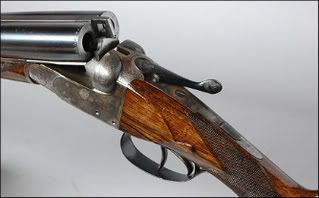

 The Accurate Reloading Forums
The Accurate Reloading Forums  THE ACCURATE RELOADING.COM FORUMS
THE ACCURATE RELOADING.COM FORUMS  Hunting
Hunting  African Big Game Hunting
African Big Game Hunting  shape of elephant tusks
shape of elephant tusksGo  | New  | Find  | Notify  | Tools  | Reply  |  |
One of Us |
I was paging through Taylor's "African Rifles and Cartridges" for the thousandth time and I again saw the photo he has in there of Fletcher Jamison. The caption of the photo talks about the type of shelter needed while on safari, but in the photo, Fletcher is seated next to a large pile of ivory - probably all in the 85+ lbs category. In looking at the tusks on the ground, I noticed that all of them appears to be VERY straight, with very little curve. The all looked like this "(". In seeing more recent photos of elephant tusks taken by hunters, I noticed many of them with larger arcs than the ones in the photograph with Jamison. These look more like this "C". Is there a reason why this is? As an elepant gets larger tusks, do they loose their deep curves and "straighten out"? Just curious... 577NitroExpress Double Rifle Shooters Society Francotte .470 Nitro Express  If stupidity hurt, a lot of people would be walking around screaming... | ||
|
| One of Us |
I'm no expert on elephant by any means but I have been told by PH's that elephant tusks are just like any other animal with a wide range. From region to region there will be differences in the tusks. Some regions produce thinner, longer tusks while others produce shorter, larger diameter tusks. So, it would not be a big stretch for me to believe that in some regions the bulls would produce straighter tusks than what we normally think of when it comes to tusk shape. Did any of that make any sense? LOL | |||
|
| One of Us |
I follow, so if any one else also follows, maybe we all need a trip to NYC's Bellview Psyc Ward Jack OH GOD! {Seriously, we need the help.} | |||
|
| Powered by Social Strata |
| Please Wait. Your request is being processed... |
|

Visit our on-line store for AR Memorabilia

